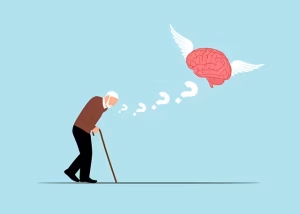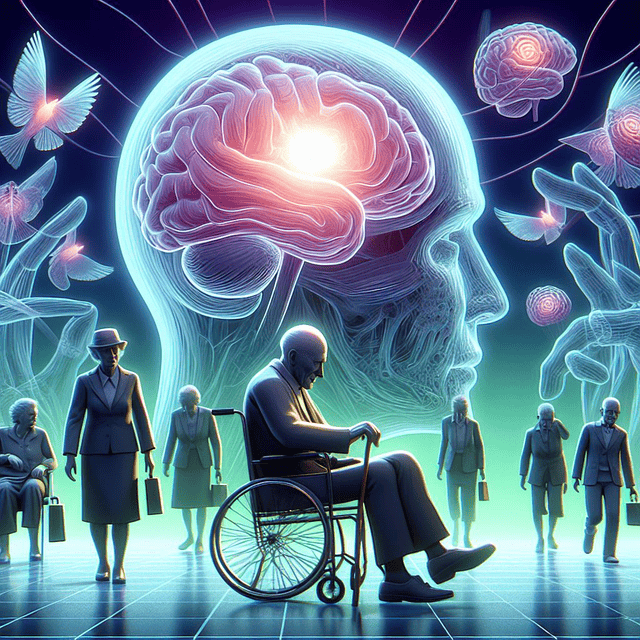As a caregiver for a loved one with dementia, you carry a weight that few can understand. Amid the daily challenges of care, a persistent fear often lingers in the back of your mind: the fear of wandering. One moment of distraction is all it takes for a loved one to walk out the door and become lost, disoriented, and vulnerable. This concern is not unfounded. According to the Alzheimer’s Association, more than 60 percent of individuals with dementia will wander at some point. This single statistic represents millions of families grappling with the same anxiety you may be feeling right now.
For years, the solutions were limited to physical locks and constant supervision, which can feel restrictive and stressful for everyone involved. Today, technology offers a more elegant and empowering solution: geofencing.
This article will serve as your comprehensive guide to understanding how geofencing technology works as a digital safety net. We will explore how it provides a proactive layer of security, what types of systems are available, and how you can choose the right one to bring invaluable peace of mind to your life while ensuring the safety of the person you care for.
What is Geofencing? Understanding the Virtual Boundary

Geofencing is a location based service that creates a virtual boundary around a real world geographical area. Think of it as an invisible, digital fence that you can draw around your home, your yard, or even your entire neighborhood. You define this safe area using a simple map interface on your smartphone or computer. A geofencing system then uses technology to know when a specific device, carried by your loved one, crosses this invisible line.
This technology doesn’t rely on a single method for location tracking. Instead, a robust geofencing device typically uses a combination of three key technologies to ensure accuracy and reliability.
- Global Positioning System (GPS): This is the most well known component. The device communicates with satellites orbiting the Earth to calculate its precise location, often within a few feet. GPS is incredibly effective outdoors where there is a clear line of sight to the sky. This is the primary technology used in most geofencing trackers.
- Wi-Fi Positioning: When a person is indoors, GPS signals can become weak or blocked. To solve this, many geofencing devices can scan for nearby Wi-Fi networks. By referencing a global database of Wi-Fi hotspots and their locations, the device can determine its position even inside a building like a shopping mall or a neighbor’s house.
- Cellular Triangulation: In areas with poor GPS and no Wi-Fi, the device can estimate its location based on its proximity to nearby cell phone towers. While less precise than GPS, it serves as a crucial backup to provide a general location, which is far better than having no information at all.
The geofencing system is made up of two simple parts. The first is the physical device that your loved one wears or carries. The second is the software, usually a user friendly app on your smartphone, that you use to draw the virtual boundaries and receive alerts. When the device exits the designated safe zone, a signal is sent through a cellular network, instantly triggering an alert on your phone. This seamless integration of hardware and software is what makes geofencing such a powerful tool for dementia care.
The Critical Challenge: Why Wandering is a Major Concern in Dementia

To appreciate the value of a geofencing solution, it is important to understand the complex reasons behind wandering. It is rarely a purposeful act of leaving; rather, it is often a symptom of the confusion and memory loss caused by dementia. An individual might wander because they are trying to fulfill a past routine, such as going to a job they held 40 years ago. They might be searching for a familiar person or place from their past, or they may simply be trying to find a bathroom and become disoriented.
Other common triggers for wandering include agitation, anxiety, or a need to escape a noisy or stressful environment. For some, it is a simple matter of restlessness or a desire to get some exercise. Regardless of the reason, the outcome is the same: they are outside of a safe, familiar environment and are unable to find their way back.
The risks associated with wandering are severe and immediate. A person with dementia who is lost can quickly become dehydrated or suffer from exposure to extreme heat or cold. They are at a significantly higher risk of falls or traffic related injuries due to their impaired judgment and disorientation.
Sadly, they can also become vulnerable to strangers who may not have their best interests at heart. The emotional toll is immense, both for the individual who is lost and frightened and for the caregivers who are left in a state of panic. The urgency of these situations is why a proactive monitoring system like geofencing is so critical.
How Geofencing Directly Prevents Wandering Incidents and Aids Recovery

A geofencing system fundamentally changes the dynamic of wandering from a reactive crisis to a proactive, manageable event. It provides a structured, three step process that empowers caregivers to act swiftly and effectively, transforming a potentially dangerous situation into a simple recovery mission.
Step 1: Creating a “Safe Zone”
The entire process begins with you, the caregiver. Using the companion app for your geofencing device, you will see a map of your area. With the touch of a finger, you can draw a circle or a custom shape around your home and yard. This becomes the primary safe zone. You are not limited to just one area; you can create multiple geofencing perimeters. For example, you can set up a safe zone around a daughter’s house for when your loved one is visiting, another around a local park you frequent, or one around the dementia day care center. This flexibility allows the geofencing system to adapt to your life and routines, providing safety without unnecessary confinement.
Step 2: The Instant Alert System
This is where the magic of geofencing happens. The moment your loved one’s device crosses the virtual boundary you have created, the system triggers an immediate alert. This alert is sent directly to your smartphone as a push notification, a text message, or even an email. You can often add multiple contacts to the alert list, so your spouse, sibling, or a close neighbor can also be notified simultaneously. This instant notification is the most crucial benefit of a geofencing system. You are no longer waiting to discover that your loved one is missing. You are informed the very second they step outside the designated safe area, allowing you to intervene before they can get far.
Step 3: Real-Time Location Tracking for Quick Recovery
Once you receive an alert, the panic and uncertainty of traditional search efforts are eliminated. You simply open the geofencing app on your phone. On the map, you will see a pin or icon that shows the exact, real time location of your loved one’s device. You can watch as the pin moves, allowing you to see which direction they are heading and track their current position.
This turns a frantic search of the entire neighborhood into a direct path to their location. Instead of spending precious minutes or hours guessing where to look, you can immediately head to their precise spot, dramatically reducing the time they are left vulnerable and alone. This real time tracking capability is the final piece of the puzzle that makes geofencing an indispensable safety tool.
Choosing the Right Geofencing Solution: Types of Devices

The market for geofencing devices has grown significantly, offering a variety of options to suit different needs and lifestyles. The effectiveness of any geofencing system depends on the person with dementia consistently having the device with them. Understanding the different types is key to choosing the one your loved one is most likely to use.
Wearable Devices
These are some of the most popular choices for dementia care because they are designed to be worn on the body, making them less likely to be forgotten or misplaced. Common forms include:
- Smartwatches: Many watches designed for seniors have built in GPS and geofencing capabilities. They look like normal watches, which can increase the likelihood of them being worn. Many also include features like fall detection, a heart rate monitor, and an SOS button that the wearer can press to call for help.
- Bracelets and Pendants: These are simpler devices that function purely as trackers. They are often designed with a secure, non removable clasp to prevent the wearer from taking them off. They are a good option for individuals who might be resistant to wearing a watch or who may tamper with their belongings.
The main advantage of wearables is their consistency. The primary disadvantage is that some individuals with dementia may refuse to wear a new item or may try to remove it out of habit or agitation.
Standalone GPS Trackers
Standalone trackers are small, discrete devices that are not designed to be worn. These portable units can be placed in a pocket, clipped to a belt loop, attached to a keychain, or tucked into a purse or bag that the person carries every day. Some can even be attached to a wheelchair or walker.
The key benefit of these devices is their unobtrusive nature. For someone who resists wearing anything on their wrist, a small tracker in a pocket can be the perfect solution. They also tend to have a longer battery life than many smartwatches. The obvious downside is that their effectiveness depends entirely on the person remembering to take the item—the purse, the coat, the keychain—that contains the tracker with them when they leave. A good geofencing strategy may involve using one of these in tandem with other safety measures.
Smartphone Applications
If the person with dementia already owns and consistently carries a smartphone, you may not need to buy any new hardware. Certain applications can be installed on their phone to provide geofencing functionality. You would install a companion app on your own phone to set the boundaries and receive alerts.
This is the most cost effective option if a phone is already in use. However, it is also the least reliable for dementia care. It relies on the phone being charged, turned on, and on their person at all times. A person with dementia may forget to charge their phone, turn it off, or leave it at home, rendering the geofencing app useless. This option is typically better suited for younger family members or for seniors in the very early stages of cognitive decline.
Key Features to Evaluate Before You Buy

When you begin shopping for a geofencing system, you will find a wide array of features and price points. Focusing on a few practical considerations will help you cut through the noise and select a device that is reliable, effective, and easy to manage.
- Battery Life: A tracking device is only useful if it is powered on. Look closely at the advertised battery life. Some smartwatches require nightly charging, which can become part of a routine. Standalone trackers, on the other hand, can often last for several days or even weeks on a single charge. Consider your own ability to maintain a charging schedule and choose a device that fits your lifestyle.
- Accuracy and Reliability: The most accurate devices use a combination of GPS, Wi-Fi, and cellular location services. A device that only uses GPS may fail to locate your loved one once they go inside a building. Check product reviews and specifications to ensure the device offers multi faceted tracking for the most reliable geofencing performance.
- Durability and Water Resistance: The device will be part of a daily routine and needs to withstand some wear and tear. Look for a tracker that is water resistant or waterproof. This ensures it will not be damaged by a spilled drink, rain, or accidental immersion in water during bathing.
- Ease of Use: The technology should reduce your stress, not add to it. The caregiver app should be simple, intuitive, and stable. Setting up a new geofencing zone, checking the device’s location, and managing alert settings should be straightforward. Look for systems that have clear instructions and good customer support.
- Cost and Subscription Fees: The cost of geofencing typically has two parts. First is the upfront cost of the hardware itself, which can range from around fifty dollars to several hundred. Second, most systems require a monthly subscription fee. This fee covers the cellular data plan that the device uses to communicate its location to you in real time. These plans can range from five to forty dollars a month. Be sure to understand the full cost before making a purchase.
- Alert Customization: A good geofencing system offers flexibility. You should be able to create multiple safe zones of different shapes and sizes. You should also have the ability to add several family members or trusted neighbors to the notification list. Some systems even offer alerts for low battery or when the device has been powered off.
Navigating the Ethical Considerations of Tracking
The topic of tracking a person can feel uncomfortable, and it is important to address the ethical side of using a geofencing device. The primary goal is always to ensure the safety and well being of the person with dementia. However, this must be balanced with respect for their dignity, autonomy, and privacy.
In the early stages of dementia, it is crucial to have an open conversation with your loved one about a tracking device. Frame the discussion around safety and independence. You can explain that this tool is similar to a smoke detector or a medical alert button; it is there to help in an emergency. Reassure them that its purpose is to keep them safe so they can continue to enjoy activities like walking in the garden or visiting a neighbor independently.
As the disease progresses, the individual may no longer be able to understand the purpose of the device or provide meaningful consent. In these situations, the responsibility for their safety falls to the primary caregiver or legal guardian. The decision to use a geofencing tracker is made in their best interest to protect them from the very real dangers of wandering. It is a protective measure, not a punitive one. Keeping the device as discrete as possible and preserving a normal routine can help maintain their sense of dignity.
Commonly Asked Questions
Q1: What is the best tracking device for dementia patients?
A: The “best” device truly depends on the individual’s specific circumstances and habits. A wearable device like a watch or bracelet is often ideal if the person will wear it consistently without trying to remove it. If they are resistant to wearables but always carry a specific purse or jacket, a standalone tracker placed inside that item can be a very effective solution.
Q2: Are there apps that track people with dementia?
A: Yes, there are apps that can turn a person’s own smartphone into a tracking device. The geofencing is managed through a companion app on the caregiver’s phone. While this is a low cost option, it is only reliable if the person with dementia consistently remembers to carry their phone and keep it charged and turned on.
Q3: How much does a geofencing system cost?
A: You can expect two types of costs. First, there is an upfront purchase price for the device itself, which typically ranges from $50 to $200 or more. Second, there is almost always a monthly subscription fee, which can range from $5 to $40. This monthly fee covers the cellular service the tracker needs to send its location data and alerts to your phone.
Q4: Is geofencing difficult to set up?
A: No, most modern geofencing systems are designed to be very user friendly. The setup process usually involves charging the device, downloading the companion app on your smartphone, creating an account, and pairing the device to your account. Drawing the safe zones on the map is typically a simple drag and drop process that takes only a few minutes.
Conclusion: Geofencing as a Vital Tool for Modern Dementia Care
The responsibility of caring for someone with dementia is a journey of love, patience, and constant vigilance. While no technology can replace compassionate human care, tools like geofencing can provide powerful support that significantly lightens the load. By creating virtual boundaries, a geofencing system delivers instant alerts and provides real time location data the moment a loved one wanders from a safe area. This transforms a situation of high anxiety and potential danger into a controlled and manageable event.
This technology empowers caregivers, granting them a much needed sense of security and peace of mind. It allows them to feel confident that if a wandering incident occurs, they have the means to resolve it quickly and safely. For the person with dementia, geofencing can mean greater freedom, more independence, and the ability to remain in a familiar home environment for longer. In the complex landscape of dementia care, geofencing stands out as a practical, effective, and profoundly valuable tool for protecting those we love most.










